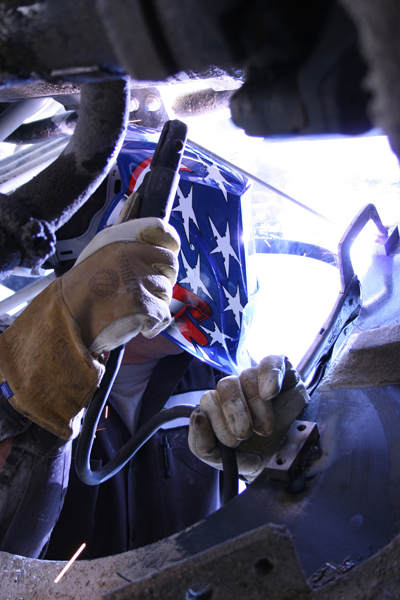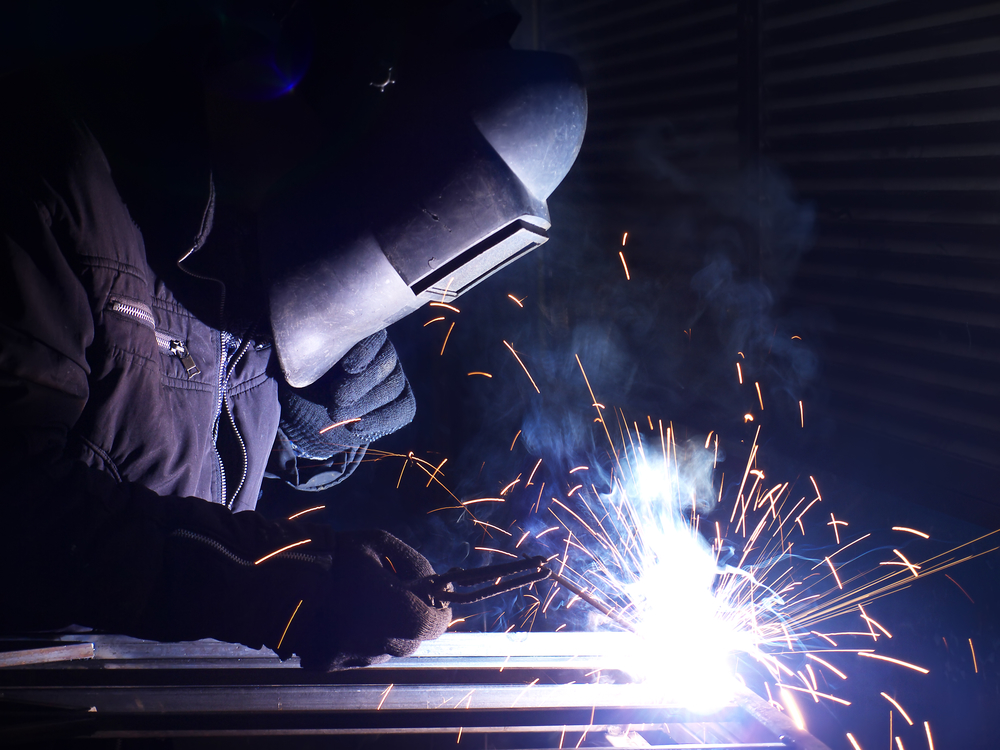Reliable weld inspection practices shared by Montana Mobile Welding and Repair
Everything about Welding: Key Insights Into Techniques and Finest Practices for Success
Welding includes a range of strategies, each suited for details products and applications. Understanding these methods, such as GMAW, SMAW, and TIG, is essential for achieving excellent outcomes. Additionally, the ideal devices and security methods can not be ignored. As preparation and fixing play crucial functions in the welding procedure, understanding these components can greatly boost the top quality of the last product. What are the key variables that guarantee an effective weld?
Understanding Different Welding Techniques
Welding techniques encompass a variety of approaches, each fit to particular applications and materials. Amongst one of the most usual methods are Gas Metal Arc Welding (GMAW), Shielded Steel Arc Welding (SMAW), and Tungsten Inert Gas Welding (TIG) GMAW, additionally referred to as MIG welding, is popular for its rate and convenience, making it optimal for thin products. SMAW, or stick welding, is preferred for its simpleness and efficiency in outdoor settings, especially with thicker metals. TIG welding supplies accuracy and control, making it suitable for intricate job and non-ferrous steels (Belgrade Welding). Each technique has its special benefits and factors to consider, allowing welders to pick the most effective technique based upon the project's requirements, product kind, and wanted results. Understanding these techniques is important for effective welding
Important Welding Devices and Devices
While numerous welding strategies require certain abilities, the ideal equipment and tools are just as necessary for attaining high quality results. Vital welding devices consists of welding machines, which vary depending upon the method-- such as MIG, TIG, or stick welding. Safety equipment, consisting of aprons, handwear covers, and headgears, warranties safety and security and comfort during the process. In addition, clamps and fixtures aid safeguard products in area, making certain accuracy in welds. Consumables like welding rods, cord, and securing gas are additionally essential elements that influence the top quality of the weld. Tools such as cutters and grinders facilitate surface area prep work and post-weld completing, contributing to an expert result. Buying premium devices ultimately boosts the performance and efficiency of welding tasks.
Security Practices in Welding
Appropriate safety and security techniques are necessary in the welding sector to safeguard employees from potential threats. Welders have to use appropriate personal protective devices (PPE), consisting of safety helmets with proper shading, handwear covers, and flame-resistant garments. Sufficient air flow is important to lower direct exposure to hazardous fumes and gases created during the welding procedure. Additionally, employees must be learnt the correct handling of welding tools to stop mishaps. Fire precaution, such as keeping flammable products away from the welding location and having fire extinguishers conveniently offered, are required. Routine inspections of tools and work spaces can help determine potential dangers prior to they cause accidents. By sticking to these security methods, welders can produce a more secure working atmosphere and lessen risks related to their trade.
Preparing Materials for Welding
Preparing products for welding is an essential step that greatly influences the high quality and honesty of the final product (Fabrication). Appropriate preparation includes cleansing the surfaces to remove contaminants such as dirt, corrosion, and oil, which can jeopardize the weld. Strategies such as grinding, fining sand, or making use of solvents are frequently employed to achieve a tidy surface. Furthermore, ensuring that the products mesh snugly is necessary; spaces can bring about weak welds. It's also crucial to take right into account the placement and positioning of the components, as this will certainly influence the ease of welding and the final result. Picking the appropriate filler product and ensuring compatibility with the base steels is essential for attaining strong, durable welds.
Tips for Achieving High-Quality Welds
Accomplishing top quality welds calls for interest to detail and adherence to finest techniques throughout the welding procedure. Correct joint prep work is essential, ensuring surfaces are cost-free and tidy from impurities. Choosing the proper filler product and welding method based on the base steels is essential for suitable bonding. Maintaining regular traveling speed and angle while welding can prevent flaws and advertise uniformity. Additionally, regulating warmth input is important; excessive heat can result in bending and deteriorated joints. If needed, on a regular basis inspecting the welds throughout the procedure allows for prompt adjustments. Employing appropriate post-weld therapies, such as cleansing and stress and anxiety alleviation, can boost the longevity and integrity of the weld, eventually guaranteeing a successful result.
Fixing Usual Welding Issues
Welding commonly presents challenges that can influence the quality and integrity of the last product. Common issues such as porosity, inconsistent weld grains, and overheating can develop, each requiring details repairing techniques. Comprehending these problems is necessary for welders to boost their skills and achieve optimal results.
Porosity Issues Described
Although porosity can usually be ignored, it Home Page remains an essential issue in welding that can endanger the stability of a completed item. Porosity refers to the existence of tiny gas pockets within the weld bead, which can compromise the joint and lead to premature failure. This issue usually develops from contaminants, dampness, or improper securing gas insurance coverage throughout the welding process. To mitigate porosity, welders need to verify that the base materials are completely dry and clean, utilize proper shielding gases, and maintain constant welding criteria. Consistently evaluating the devices and environment can additionally assist determine possible problems before they manifest in the weld. Dealing with porosity properly is vital for accomplishing solid, sturdy welds that fulfill quality criteria.

Inconsistent Weld Beans
Inconsistent weld beads can substantially impact the quality and toughness of a finished item. Various factors add to this concern, including improper traveling speed, inaccurate amperage setups, and irregular electrode angles. When the welder relocates also swiftly, a bead might appear slim and do not have penetration, while moving as well gradually can create extreme buildup. Additionally, utilizing the wrong amperage can result in click either damaging or excessive spatter, both of which compromise weld honesty. The welder's method, such as irregular torch activity, can likewise result in uneven grain appearance. To mitigate these problems, welders must concentrate on maintaining consistent, controlled motions and ensuring appropriate tools settings to accomplish harmony in their welds. Consistency is key to attaining dependable and solid welds.
Overheating and Warping Issues
Extreme heat during the welding process can bring about significant overheating and deforming issues, affecting the structural integrity of the work surface. These issues typically materialize as distortion, which can compromise positioning and fit-up, making additional assembly testing. Factors adding to overheating include the option of welding parameters, such as voltage and take a trip rate, along with the kind of product being welded. To alleviate these problems, welders need to keep consistent travel rate and appropriate warm input while checking the work surface temperature level. In addition, pre-heating or post-weld warm therapy can assist relieve tensions triggered by fast air conditioning - Montana Mobile Welding and Repair Fabrication. Regular inspection and adherence to ideal methods are vital in stopping getting too hot and making sure the longevity and reliability of welded structures
Regularly Asked Concerns
What Are the Profession Opportunities in the Welding Sector?
The welding industry offers varied occupation possibilities, consisting of settings as welders, educators, assessors, and designers. Specialists can operate in manufacturing, construction, aerospace, and vehicle markets, benefiting from solid need and affordable salaries in numerous functions.
Just How Can I Enhance My Welding Speed Without Compromising Quality?
To enhance welding rate without giving up top quality, one need to exercise efficient techniques, More Help preserve tools, enhance setups, and boost hand-eye control. Routine training and seeking responses can also greatly contribute to achieving quicker, premium welds.
What Qualifications Are Available for Welders?
Various accreditations exist for welders, consisting of those from the American Welding Culture (AWS), the National Facility for Construction Education and Research (NCCER), and different industry-specific organizations. These qualifications enhance employability and demonstrate ability proficiency.
How Does Welding Affect the Residences of Metals?
Welding affects the residential or commercial properties of steels by altering their microstructure, which can bring about changes in ductility, stamina, and solidity. Warmth input and cooling prices during the process substantially influence these product qualities.
Can I Weld Dissimilar Metals Together?
